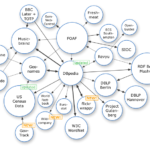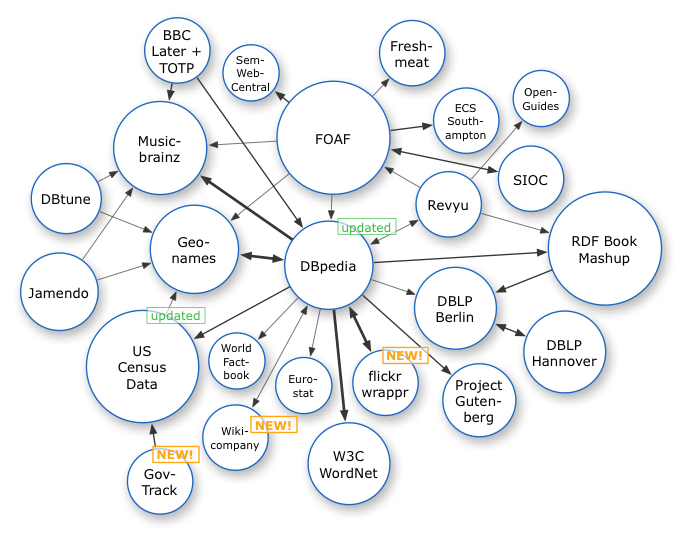Table of Contents
ToggleThis analysis aims to provide an in-depth understanding of Schema Markup, its effective implementation for product reviews, and its potential benefits. With the aid of empirical data and practical examples, we’ll shed light on its efficacy, present best practices, and provide a glimpse into the future trends of Schema Markup. This insightful resource is intended for those who aspire to harness the power of Schema Markup to optimize their E-Commerce platform’s performance.
Schema Markup, an advanced SEO tool, is instrumental in enhancing the interpretability of E-Commerce product reviews for search engines, thereby improving SERP visibility. This potent tool, when aptly utilized, can significantly elevate click-through rates, web traffic, and conversions – the cornerstones of any successful E-Commerce platform.
Key Takeaways
- Schema Markup is an advanced SEO tool that enhances the interpretability of E-Commerce product reviews for search engines.
- Schema Markup is crucial for enhancing visibility in the competitive landscape of online retail.
- Product review markup is a form of structured data that allows search engines to better understand and represent product reviews in search results.
- Implementing Schema Markup for reviews involves choosing the right markup and can be done manually or using tools like Google’s Structured Data Markup Helper.
Understanding Schema Markup
Schema markup, a powerful SEO tool, provides a unique method for e-commerce businesses to improve their product review visibility on search engines. This tool, embedded in a website’s HTML code, communicates directly to search engines about the website’s content, thus enhancing its interpretation and representation in search results. It is a semantic vocabulary of microdata tags, each tag providing specific details about a product such as name, image, brand, and reviews. When implemented correctly, schema markup can lead to rich results, which are enhanced search listings that can significantly boost click-through rates. Understanding and applying schema markup effectively requires a good grasp of its technical aspects and potential benefits, making it essential for any e-commerce business aiming for SEO dominance.
Importance of Schema Markup for E-Commerce
In the competitive landscape of online retail, leveraging the power of schema markup becomes crucial for e-commerce businesses to enhance their visibility, particularly in the realm of product reviews.
- Schema markup assists in:
- Increasing Visibility: By providing search engines with clear, detailed information about your products, schema markup helps increase the likelihood of your products appearing in relevant search results.
- Enhancing Customer Trust: Product reviews included in schema markup can be displayed directly in search results, providing potential customers with valuable insights about your product’s quality and reliability.
Basics of Product Review Markup
Product review markup, a form of structured data, allows search engines to better understand and represent your product reviews in search results. By adhering to the guidelines set by the Schema.org vocabulary, businesses can add relevant details such as the reviewer’s name, the rating, and the review body. Including these in the website’s HTML enhances the richness of search listings, potentially improving click-through rates. Moreover, it instills confidence in prospective customers, as the visible ratings and reviews in search results provide immediate social proof. Thus, mastering product review markup is a strategic move for e-commerce entities aiming to excel in the digital marketplace.
Implementing Schema Markup for Reviews
With a firm grasp on the basics of product review markup, an e-commerce business’s next strategic leap involves the implementation of Schema Markup for reviews. The implementation is a two-step process:
- Step 1: Choosing the Right Markup
- AggregateRating: Ideal for a collection of reviews for a product.
- Review: Perfect for individual customer reviews.
- Step 2: Applying the Markup
- Manually: This involves adding the markup to the HTML of your webpage.
- Using a Tool: Tools like Google’s Structured Data Markup Helper can simplify this process.
Successfully implementing Schema Markup can enhance your search engine visibility and credibility. It’s a meticulous process, but the benefits of structured data for your online presence are significant and worth the effort.
Best Practices for Markup Implementation
To maximize the effectiveness of your Schema Markup implementation, ensure that the markup is applied to the correct page elements, such as the product name, price, and reviews. This creates a clear and consistent association between the markup and the product information. Secondly, use the most specific type of markup available, allowing search engines to better understand and present your data. For instance, use the Product schema for products, and the Review schema for reviews. Lastly, validate your markup using a tool like Google’s Structured Data Testing Tool. This ensures your markup is correctly implemented, leading to improved visibility and potentially higher click-through rates for your e-commerce site.
Effect of Schema Markup on SEO
This code allows search engines to better understand your content, leading to improved rankings and increased organic traffic.
- The implications of integrating Schema Markup are two-fold:
- Improved Click-Through Rates (CTR): When product reviews are displayed in search results, users are more likely to click on these results, improving your CTR.
- Enhanced User Experience: By providing detailed information upfront to potential customers, you not only increase trust but also boost the overall user experience.
Adopting Schema Markup for product reviews is thus a strategic move for e-commerce businesses, effectively bridging the gap between pure SEO and providing valuable, digestible information to potential customers.
Benefits of Product Review Schema for Customers
A significant number of online shoppers find product review schema beneficial as it provides them with detailed and trustworthy information about a product before making a purchase decision. This semantic tool enhances the user experience by offering a comprehensive understanding of the product’s features, pros, cons, and overall performance. It helps in reducing the uncertainty associated with online shopping by facilitating informed purchase decisions. Furthermore, the product review schema organizes and presents review data in a manner that is easy to comprehend and compare. It aids customers in swiftly identifying the best-rated products, thus saving their time and effort. Moreover, the schema markup also facilitates the display of product ratings in search results, thereby increasing the visibility and credibility of the products.
What is the main purpose of using schema markup in E-Commerce SEO?
Leveraging schema markup in E-commerce SEO primarily aims to enhance the visibility and searchability of products by providing structured and precise information to search engines. This strategic move is designed to improve the website’s appearance in search results, thereby increasing click-through rates and driving more organic traffic.
- Enhancing Product Visibility:
- By providing detailed product information, schema markup allows the search engine to understand the content better, thus improving the product’s ranking.
- This strategic data presentation increases the chances of your product appearing in relevant searches.
- Increasing Organic Traffic:
- The rich snippets generated by schema markup can lead to higher click-through rates.
- This, in turn, drives more organic traffic to your website, thus boosting your online sales.
Common Mistakes in Applying Schema Markup
Mistakes in the application of schema markup can undermine the effectiveness of E-commerce SEO strategies. One common error is the incorrect usage of markup properties, which may lead to misinformation conveyed to search engines and users. Improper nesting of schema elements is also prevalent, resulting in a failure of the structured data to be correctly interpreted by search engines. Additionally, many users neglect to update their schema markup when products or reviews are updated, leading to outdated or inaccurate information being displayed. Lastly, the omission of mandatory properties in the schema markup is a critical mistake that may lead to the exclusion of the product from rich results. Avoiding these pitfalls can significantly enhance the efficacy of E-commerce SEO strategies.
Manual vs Automated Schema Markup Implementation
A choice in schema markup implementation for E-commerce product reviews revolves around deciding between manual and automated methods.
- Manual Implementation
- This method demands technical acumen, time, and meticulous attention to detail.
- It offers control and flexibility, but the risk of human error and inconsistencies can potentially compromise the integrity of the markup.
- Automated Implementation
- This method leverages technology to streamline the process, reducing the risk of errors and inconsistencies.
- However, automated tools may not cover every nuance of your specific product offer, potentially limiting the richness of your schema markup.
Each approach carries its own set of advantages and challenges. Mastery of schema markup implementation requires a keen understanding of these dynamics to make an informed decision.
Utilizing Schema Markup for Better SERP Display
The strategic use of schema markup can significantly enhance the visibility of E-commerce product reviews on Search Engine Results Pages (SERPs). By accurately tagging the key features of product reviews such as ratings, price, and availability, schema markup offers search engines clear and structured data about the page content. This data is then used to create rich snippets, leading to improved click-through rates and better user engagement. Furthermore, by leveraging schema markup, e-commerce businesses can highlight the unique selling propositions of their products directly on the SERPs, thereby gaining a competitive advantage. However, the implementation of schema markup requires a deep understanding of SEO practices and meticulous attention to detail to ensure that it aligns with the latest guidelines provided by search engines.
Advanced Review Markup Techniques
Why should e-commerce businesses consider advanced review markup techniques for their product reviews? The answer lies in the significant benefits that these techniques bring. Not only do they enhance the visibility of product reviews on search engine result pages (SERPs), but they also provide a richer user experience, leading to higher click-through rates (CTRs) and conversions.
Advanced review markup techniques offer:
- Enhanced SERP visibility
- Rich snippets that include star ratings and reviewer details
- Aggregate ratings that give a quick overview of product popularity
- Improved user experience
- Detailed review information at a glance
- Easy navigation through review content
Mastering these techniques entails a deep understanding of schema markup language and SEO optimization strategies, but the potential rewards for e-commerce businesses are well worth the effort.
Monitoring the Impact of Review Markup
Understanding the impact of review markup on your e-commerce business necessitates thorough monitoring and analysis of key performance indicators. The metrics to consider include search engine ranking position (SERP), click-through rate (CTR), and conversion rate, which are directly influenced by effective review schema. SERP gives insight into the visibility of your product pages on search engines. A higher CTR, facilitated by rich snippets from review markup, indicates increased user engagement. Lastly, a rise in conversion rate can signify an improvement in user trust and product appeal. Regularly monitoring these indicators will help ascertain the effectiveness of the review schema, enabling necessary adjustments for optimal performance. Mastery of this process is crucial for your e-commerce success.
Adapting Schema Markup for Multiple Products
Monitoring the effectiveness of schema markup for single products, we now transition to exploring how to adapt this crucial SEO strategy for multiple products in an e-commerce setting. As a complex task, it necessitates a calculated approach, taking into account both the uniqueness and commonalities of the products.
- Product Specificity:
- Leverage unique attributes and industry standards to accurately describe each product.
- Utilize product brands and related entities to enhance search engine understanding.
- Scalability:
- Develop a universal schema markup template, maximizing efficiency without sacrificing accuracy.
- Employ automation methods to apply markup across a large product range.
This adaptation process is not a one-size-fits-all solution. It requires constant optimization and refinement to align with SEO best practices and ensure the most beneficial impact on your e-commerce site’s visibility.
Future Trends in Schema Markup for Reviews
In the rapidly evolving field of e-commerce, staying abreast of emerging trends in schema markup for reviews is a key factor in maintaining competitive advantage and optimizing user experience. As we look to the future, three key trends stand out: the rise of voice search, the use of artificial intelligence in review analysis, and the growing importance of localized reviews.
| Trend | Description | Impact |
|---|---|---|
| Voice Search | Increasing the use of voice assistants necessitates a review schema that is optimized for voice search. | More accessible and user-friendly product information. |
| AI in Review Analysis | AI technologies are being used to analyze review data and provide insights. | Improved decision-making for businesses and enhanced user experience. |
| Localized Reviews | Localized reviews help businesses target specific markets more effectively. | Greater relevance and personalization for users. |
Frequently Asked Questions
What Are the Potential Drawbacks of Using Schema Markup for E-Commerce Product Reviews?
Potential drawbacks include inaccurate or misleading representation of reviews, and risking penalties from search engines. Additionally, maintaining and updating schema markups can be resource-intensive, potentially straining limited resources for small businesses.
How Does Schema Markup for Product Reviews Interact With Other Forms of Schema Markup on the Same Website?
Schema markup for product reviews interacts with other schema types by providing interconnected, detailed information, enriching the website’s semantic understanding, improving SEO, and enhancing the display of information on search engine results pages.
Are There Specific Industries or Types of Products for Which Schema Markup Is Particularly Beneficial or Detrimental?
Schema markup is particularly beneficial for industries with tangible products and customer reviews, such as electronics, clothing, and hospitality. It may be less effective for services or items lacking substantial user feedback.
How Frequently Should Schema Markup for Product Reviews Be Updated or Reviewed for Accuracy?
Review accuracy is crucial for reliable schema markup. It should be updated or reviewed frequently, ideally, every time a new review is added or an existing one is modified to maintain data integrity and relevance.
What Are Some Real-World Examples of Successful Implementation of Schema Markup for Product Reviews in E-Commerce?
Real-world examples of successful schema markup implementation include Amazon and Best Buy. These e-commerce giants use review schema markup to display product ratings, enhancing visibility and credibility in search engine result pages.
Conclusion
Implementing Schema Markup for E-Commerce product reviews can significantly enhance a platform’s visibility, click-through rate, and conversion, thereby driving its success. It is vital to stay informed about the latest trends and best practices in Schema Markup. Utilizing this tool effectively can provide a competitive edge, positioning an E-Commerce platform as a leader in its industry. Future research should investigate Schema Markup’s evolving role in E-Commerce and its potential impacts.












